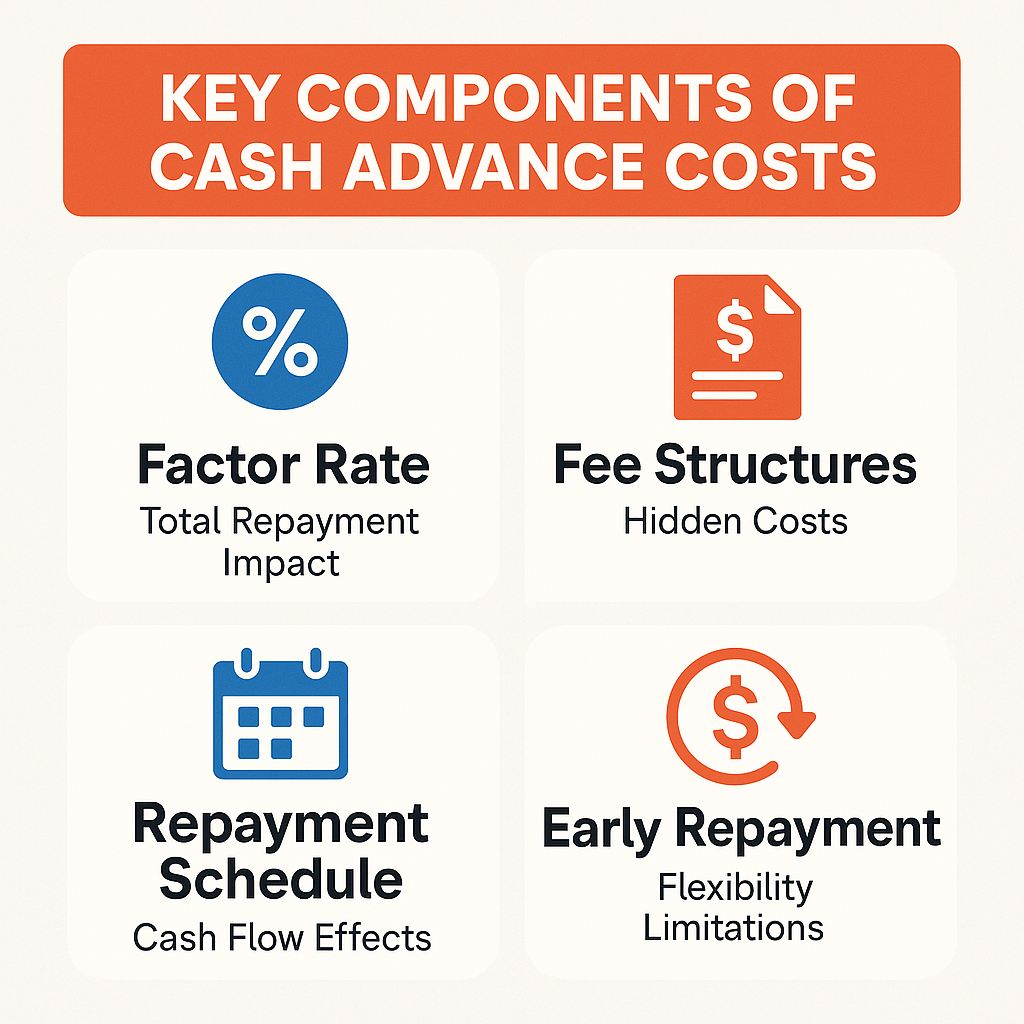When your business needs quick funding, a merchant cash advance might seem like an attractive option. However, understanding the true cost of a cash advance involves much more than looking at the initial amount you receive. The real expense comes from factor rates, fee structures, and repayment terms that can significantly impact your bottom line.
Many business owners find themselves surprised by the actual cost of their cash advance because they didn't fully grasp how these financial products work. Unlike traditional financing options, cash advances operate with unique pricing models that require careful analysis to understand their true impact on your business finances.
Do's for Managing Cash Advance Costs
Successfully managing cash advance costs requires following proven strategies that help you make informed decisions. These practices can help you understand and minimize the financial impact of your funding choice.
- Do use calculation tools to assess cost structures and convert factor rates into APR metrics for transparent financial forecasting
- Do study all cost components including factor rates and fee structures to forecast cash flow needs with greater precision
- Do compare repayment structures against traditional funding options to align with your business's liquidity needs
Don'ts That Lead to Financial Surprises
Avoiding common mistakes when dealing with cash advances can save your business from unexpected financial burdens. These pitfalls often catch business owners off guard and can lead to serious cash flow problems.
- Don't ignore the factor rate impact on your total repayment, as a seemingly simple factor rate can translate into surprisingly high costs
- Don't skip detailed analysis of rate structures, which can prevent unforeseen financial obligations down the road
- Don't overlook daily payment requirements that might disrupt your business operations and cash flow management
- Don't assume all advances are similar without comparing fee structures and repayment schedules across different providers
How Factor Rates Determine Your Total Cost
Factor rates serve as the primary cost component in cash advances, and understanding how they work is essential for calculating your true expense. The factor rate impact extends far beyond the simple multiplication you might expect.
- Calculate your total repayment amount by multiplying your advance amount by the factor rate. For example, a factor rate of 1.25 on a $100,000 advance means you'll repay $125,000 total.
- Convert the factor rate to an annual percentage rate to understand the true cost. That same 1.25 factor rate might translate to an implicit interest rate exceeding 50% annually, depending on repayment speed.
- Consider the repayment timeline when evaluating factor rates, as shorter repayment periods result in higher effective interest rates even with the same factor rate.
- Compare factor rates across providers while also examining their fee structures, as the lowest factor rate doesn't always mean the lowest total cost.
Breaking Down Fee Structure Components

The fee structure of cash advances includes several components beyond the factor rate that affect your total cost. Understanding these elements helps you avoid surprises and budget more accurately.
- Origination fees typically get deducted from your advance amount upfront, reducing the actual funding you receive while maintaining the same repayment obligation.
- Processing fees may apply to each payment transaction, adding up significantly over the course of your repayment schedule, especially with daily payment structures.
- Early repayment penalties might prevent you from reducing costs by paying off your advance ahead of schedule, limiting your financial flexibility.
- Maintenance fees might appear as monthly or annual charges that might increase your total cost beyond what the factor rate suggests.
Repayment Schedule Impact on Cash Flow
Your repayment schedule significantly influences both the total cost and the practical impact of a cash advance on your business operations. Different payment structures create varying levels of cash flow pressure.
- Daily repayment schedules require consistent cash flow management and can strain businesses with irregular revenue patterns, potentially creating operational challenges.
- Weekly payment structures provide more breathing room for businesses with fluctuating daily sales while still maintaining relatively quick repayment timelines.
- Percentage-based collections automatically adjust payments based on your sales volume, which can help during slower periods but may extend repayment duration and increase total costs.
- Fixed payment amounts offer predictable cash flow planning but don't account for seasonal variations in your business revenue, potentially creating stress during slower periods.
Understanding the true cost of a cash advance requires careful analysis of factor rates, fee structures, and repayment schedules. By converting factor rates to annual percentage rates and examining all cost components, you can make more informed decisions about whether this funding option aligns with your business needs.
The key to successfully managing cash advance costs lies in thorough preparation and realistic assessment of how the repayment structure will affect your daily operations. Take time to use calculation tools and compare different options before committing to any funding arrangement.
Remember that while cash advances provide quick access to capital, their unique cost structure demands careful consideration. By following the do's and avoiding the don'ts outlined above, you can better navigate the cash advance landscape and choose funding solutions that support your business growth without creating unnecessary financial strain.

.png)






